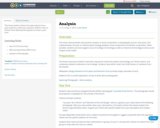
This lesson guides students through analysis of non-print media as a vehicle for argument.
Added to this are Pulitzer Prize Winning Photographs for them to pick from.
- Subject:
- English Language Arts
- Material Type:
- Lesson Plan
- Date Added:
- 08/04/2019

This lesson guides students through analysis of non-print media as a vehicle for argument.
Added to this are Pulitzer Prize Winning Photographs for them to pick from.

This lesson guides students through analysis of non-print media as a vehicle for argument.
Added to this are Pulitzer Prize Winning Photographs for them to pick from. It is important to note that the photos contain graphic images.
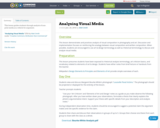
This lesson guides students through analysis of non-print media as a vehicle for argument.

This resource is a modification of the Washington Models for the Evaluation of Bias Content in Instructional Materials (2009) that is made available through OER Commons under a public domain license. This resource attempts to both update the content with more contemporary vocabulary and also to narrow the scope to evaluating still images as they are found online. It was developed as a secondary project while working on a BranchED OER grant during summer 2020. It includes an attached rubric adapted from the Washington Model (2009).
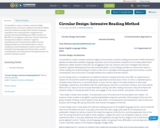
Is it possible to create a student-centered, highly communicative, intensive reading environment? While theoretical debates escalate about whether language acquisition and communicative competence are innately determined (Williamson 2009), teachers of ESL/EFL are struggling to find real, relevant classroom strategies that enhance students’ cognitive development and communicative ability. Circular Design provides an environment where a critical reading and understanding of content comes from a synergetic learning approach that involves a careful contemplation and communion of thought between the students and their teacher.

This course is an 8 Module:Introductory study of critical thinking and logic, with emphasis on argumentation, rhetoric, andproblem-solving.Examination of language, meaning, definition, fallacies, and arguments as theyoccur in academic and real-world settings (with an emphasis on online communication, media,and digital environments).Application of logic and critical thinking strategies to contemporaryissues and practical problem solving.
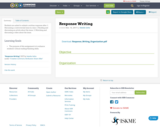
Students are asked to submit a written response after:
1. Discussing a controversial issue in class.
2. Reading and discussing an article about the issue.
3. Watching and discussing a video about the issue.

Sick of doing "article reviews", "book reviews", "short story reviews"?Look at it from a different angle: a literary review is only one of many faces that a review can have. You can do daily reviews on your own mood swings, or manga books, or subway stations.You don't even have to make it structured (unless later on you're planning to have an hours-long argument with someone scrupulous over whether your work is a review or a reflection, but we'll get to that).A review, in oral, written or any recorded form is a great way to add a little something to an ongoing conversation about any subject. If you want to make a good impression, you can call it "a considerable contribution to an existing discourse". Let's start with the most basic typology.Narrative review - as you can guess from the word "narrative", it's rather unstructured. It tends to answer the questions like "why", "how", "who", "what was the purpose", "what do we know so far" etc. The number of sources in a narrative review Systematic literature review - you can find it in dissertations and research articles. Usually it makes up a complete chapter of the work and the goal is to look through what the researchers had to say on that matter before. Has the object been thoroughly researched before - or is there something new to say? Were the results controversial; hence, in need of more evidence?Review (a.k.a literary review, unstructured review, free-writing, feedback, opinion) - is the kind of thing you've got used to starting from school, ending with Yelp.So if you're googling "something + review", you're most likely to land on the last of the three (plain "review"). It's fairly unstructured and intentionally subjective. Although, we should give online feedback forms and websites like Yelp and Omni some credit - they're making the Internet used to structuring users' impressions in a certain way. For instance, there's usually a date - a date when a review was made, or when the product was purchased. There's also the name of the facility or seller, and (more often than not) a location. Besides that, these forms and websites offer to rate one's overall experience star-wise, thus giving the whole feedback an emotional vector. You can't expect a long description of how good the facility was from a three-star feedback, can you?When you're googling something like "gaining muscle in two months scientific evidence", the chances are high that you'll land on a narrative review or a systematic review, depending on whether you're using google.com or scholar.google.com. Ideally, Google Scholar is a target search engine for objective research-based unbiased information (or at least as unbiased as it can get for a wide audience). But if you're new to a subject, a narrative review found on google.com isn't the worst thing to read. Just remember to stay critical.Do's and Don'tsDo your research. Regardless of the kind of review you're reading or writing, spend a minute or two researching it. It's called "eliminating the human factor".Do question the validity. Why did you/author come to these conclusions? What was the background? What was the context? Did anyone ever try to repeat that?Don't put all your hopes and trust on the first review you're reading. Even if it's a structured review found in an established academic journal. The first thing you've read on the subject is excellent for coordinating you in the field, but not enough to get yourself committed to one solid point of view.Don't act subjective on purpose. Even if it's an eBay feedback. Always try to go for a bigger picture - this is what reviews have been created for after all!
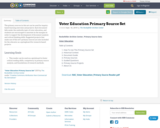
The primary sources in this set can
be used for inquiry-based learning exercises
and projects. Each document falls under the
umbrella topic of voter education, and students
are encouraged to annotate in the margins in order
to support the development of document analysis
and critical thinking skills. Suggested projects that
make use of this set’s primary sources are also
included for the educator as a springboard for
research-based projects.